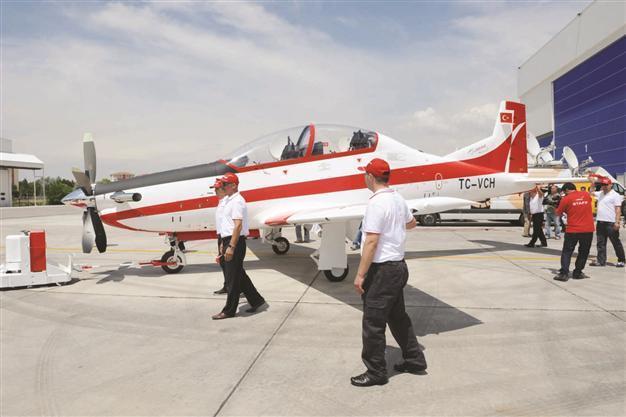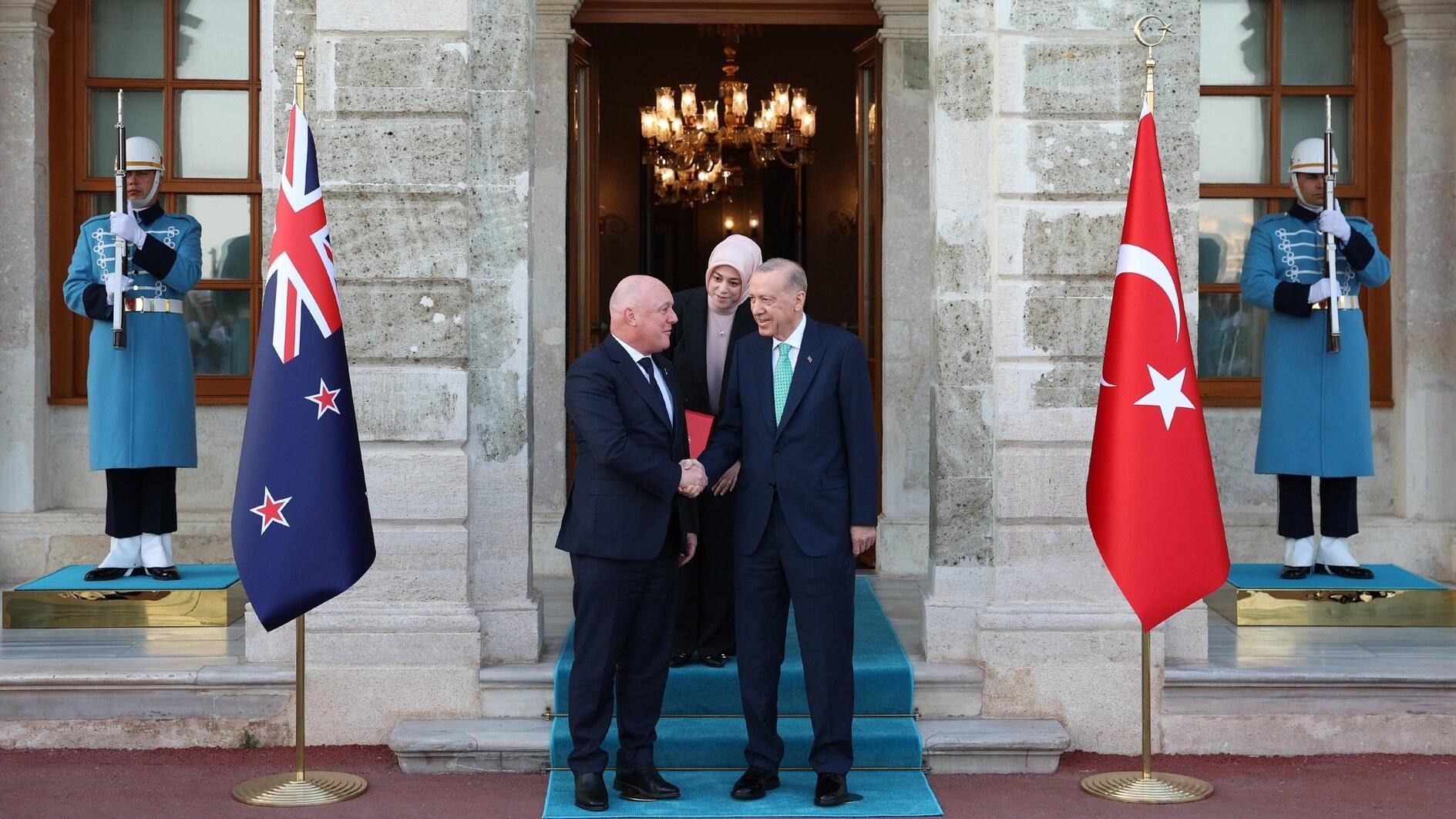Turkey launches new bid for light trainer aircraft
Burak BEKDİL

Turkey’s first indigenous basic trainer aircraft, Hürkuş, is developed by TAI. It has been undergoing tests for runway-holding, steering and braking time limits. DAILY NEWS photo, Selahattin SÖNMEZ
Turkey’s defense procurement authorities have pushed the button to launch an international competition for the acquisition of a batch of 52 basic trainer aircrafts, otherwise known as “screeners.”The Under secretariat for Defense Industries (SSM) has issued a Request for Proposals (RfP) for the contract that foresees the off-the-shelf purchase of a small fleet of screeners. The screeners will replace a fleet of ageing SF 260s used in the Turkish Air Force for preliminary training.
Turkey still operates with nearly 40 SF 260s assembled by TAI in the early 1990s. In addition, for preliminary training purposes the Air Force operates Cessna 172s.
Defense industry sources said the screener contract could go up to approximately $75 million.
Potential bidders are the U.S. Beechcraft and Cirrus, Austria’s Diamond, Germany’s Grobe, Czech Zlin and Italy’s Aermacchi.
Meanwhile, Turkey has silently phased out a fleet of 48 F-5 lead-in trainer aircrafts, which Israel’s Elbit upgraded and delivered in the early 2000s. That was a nearly $150 million contract. TAI is upgrading nearly 60 T-38 basic trainers to replace the F-5s and the older T-38s.
The Defense Industry Executive Committee, the ultimate decision-maker in defense procurement, decided Sept. 26 to make an order for the serial production of the Hürkuş, Turkey’s first indigenous basic trainer aircraft.
Turkey’s first indigenous basic trainer aircraft has been approved for flight testing, with the maiden flight planned “within the next year,” one official said.
The Hürkuş, also developed by TAI, has been undergoing tests for runway-holding, steering and braking time limits.
TAI is manufacturing four prototypes of the Hürkuş for a round of tests. The first prototype successfully went through engine tests in February, the second is being tested for static durability and cabin pressure, the third is being assembled, and the fourth will be tested for metal fatigue.
The two-seat Hürkuş will have a 35-year service life, or 10,500 flight hours. The turboprop aircraft has a 1,600-horsepower engine that can fly at an altitude of 10,577 meters at a maximum speed of 574 kilometers per hour.
The Hürkuş will be equipped for day and night flying, as well as basic pilot training, instrument flying, navigation training, weapons and formation training. Both of the aircraft’s cockpits will have good vantage points, with a 50-degree down-view angle from the rear cockpit, ejection seats, an on-board oxygen generation system, an environmental control system, an anti-G system and high shock absorbing landing gear for training missions.
The Hürkuş will come in four variants:
■ Hürkuş-A: A basic version that has been certified with EASA, according to CS-23 requirements and is intended for the civilian market.
■ Hürkuş-B: An advanced version with integrated avionics, including a mission computer and cockpit avionics layout similar to F-16 and F-35 fighters. The Turkish Army is considering an initial order of 15 aircrafts.
■ Hürkuş-C: An armed version for close-air support, which will have a maximum weapons load of 3,300 pounds. The Turkish Army has expressed interest in the Hürkuş-C to provide support for its attack helicopters.
■The Coast Guard version: TAI plans to offer another version of the Hürkuş to support the Turkish Coast Guard’s maritime patrol activities. The aircraft’s back seat would be occupied by an operator for a forward-looking infrared sensor.
















